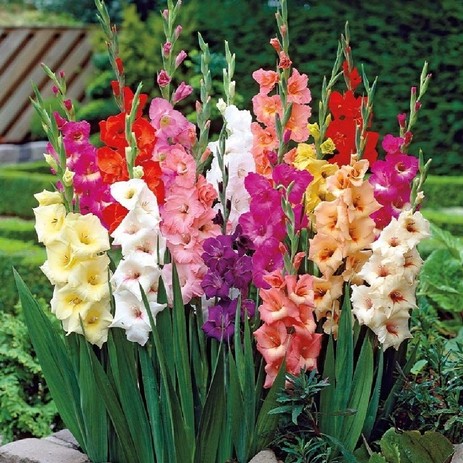 The spring daffodils, tulips, and hyacinths were beautiful, but the've all faded now. Plan your summer garden landscape and start planting those bulbs that will bloom in July and August. There are many options for summer beauties that require little maintenance and can be easily incorporated into your existing garden beds. Planting these spring bulbs for summer blooms will give you a full, fragrant, and colorful garden all summer long. When and how to plant spring bulbs Summer-blooming bulbs are most often planted in the spring, as soon as the danger of frost has passed. While planting spring bulbs is fairly simply, but there are some guidelines you should follow when planting.
Some of our favorite summer-blooming bulbs: Oriental lilies: The large, fragrant blooms of Oriental lilies are total show-stoppers in the garden. With scores of varieties available, there’s a broad range of colors and heights to choose from. Space Oriental lily bulbs about a foot apart, and be sure to stake the stems as they grow; their blossoms are heavy, and they’ll need the extra support. Dahlias: Dahlias are colorful spiky flowers which generally bloom from midsummer all the way to the first frost, when many other plants are past their best. While technically, these are tubers rather then bulbs, they work the same way as a bulb does. Just be sure to plant them with the "eyes" facing up. Dahlias come in a rainbow of colors and even range in size, from 2" to the giant 10" “dinnerplate” variety. Most grow 4 to 5 feet tall. Crocosmia: Reaching about three feet in height, the sword-like foliage is bright green. In mid-summer, stalks of arching flowers extend above the leaves. Common flower colors are red, orange, and yellow, depending on the variety. Crocosmia prefers full sun, and hummingbirds are frequently found dining on its nectar. Asiatic Lilies: Asiatic lilies differ greatly from their Oriental cousins mentioned above. They are earlier blooming, fragrance-free, and brighter colored. Their flowers aren’t typically as large as Oriental lilies and their stems are sturdier, so they don’t require extra support. Chinese ground orchids (Bletilla): If you’re looking for a summer-blooming bulb that prefers the shade, the Chinese ground orchid is for you. Though it officially grows from a bulbous rhizome, this plant is generally categorized as a summer-blooming bulb. The Chinese ground orchid reaches eighteen inches in height. The distinctive, Cattleya-like flowers come in white, purple, or lavender, and over time, the plants will spread and create a nice colony. Gladioulus: Glads are perennial favorites for their beautiful, showy flowers. Its flowers grow on tall spikes and are often found in cutting gardens or in the back along the border (because they are tall). Gladioli have many different colored flowers, and grow between 2 to 6 feet in height, so it's best to support them with stakes. The plant is also great for cut flowers.
0 Comments
Leave a Reply. |
Archives
February 2024
AuthorRodrigo Dos Anjos Categories
All
|
Gardenin' Angels, Landscape Management & Construction
A preferred landscaper, serving Southeastern Massachusetts
11 Renker Drive, Easton, MA 02375
774-284-1171
[email protected]
Privacy Policy • Terms of Use

 RSS Feed
RSS Feed